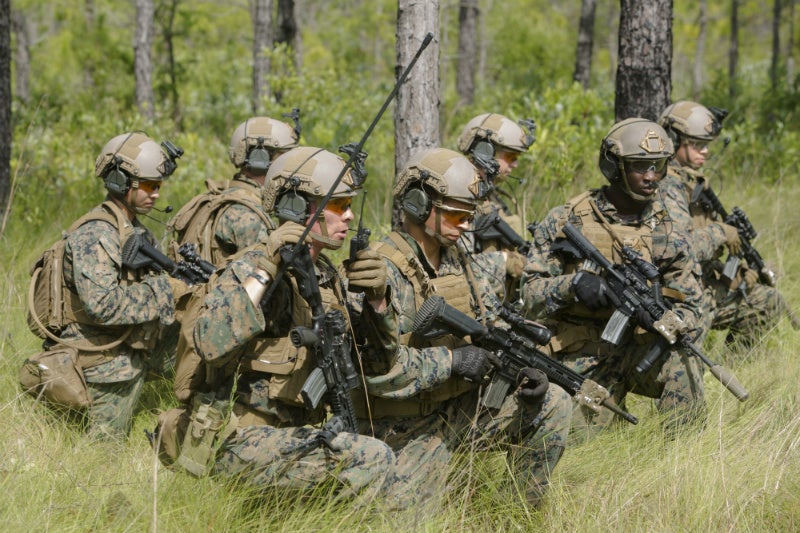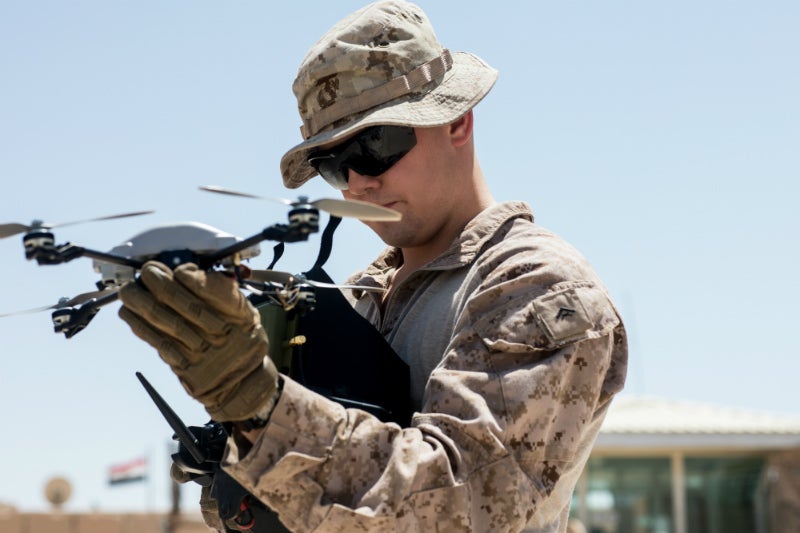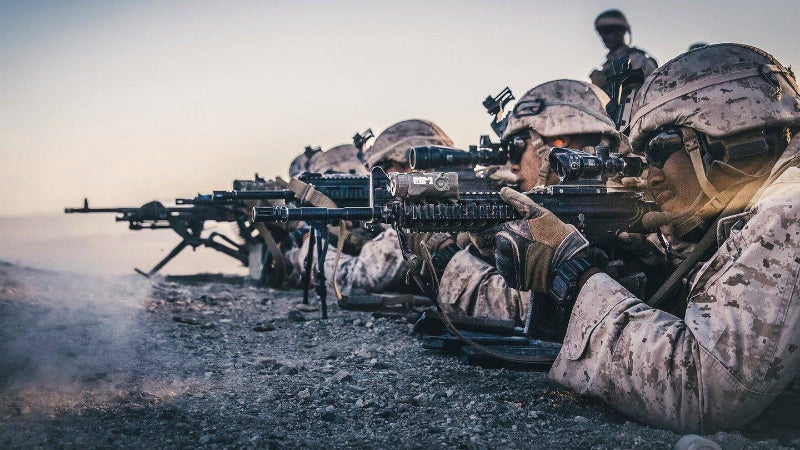
Conflicts since the end of the Cold War have predominantly focused on fighting asymmetric forces, an era defined by the US’s ‘Global War on Terrorism’ and the prolonged wars in Iraq and Afghanistan. But as countries such as Russia and China increasingly use military force and challenge the West, the US is preparing its forces to face an enemy that is far better equipped and resourced than the militant groups it has spent nearly twenty years fighting.
“This next fight will likely be very different than what we have experienced over the last two decades,” General Robert Neller, Commandant of the Marine Corps, wrote earlier this year. “The potential for great power conflict means we will be contested in every domain.”
The USMC is attempting to meet this threat head on and in 2016 articulated a new Marine Corps Operating Concept (MOC) to prepare for a potential peer-on-peer confrontation. The MOC has two purposes: to set out how the USMC intends to “operate, fight and win” in 2025 and beyond, and to shape its actions as it develops the capabilities and capacity of the future force.
Key areas for the USMC and Marine Corps Force 2025 (MCF 2025) are a return to sea-based operations that are expeditionary in nature (along with associated logistics challenges), operating in contested and denied environments, and evolving the corps’ principal Marine Air-Ground Task Force (MAGTF) structure.
Experimenting with new technology

To achieve this, the USMC is also eyeing a host of new and improved technologies including packable drones, ground robots, electronic warfare and cyber assets, and new forward basing concepts.
Informing this future force work is a series of real-world experiments, known as Sea Dragon 2025, which is being run by the Marine Corps Warfighting Laboratory (MCWL). “Sea Dragon 2025 institutionalises our campaign of learning process and will blend innovative ideas, concepts, continuous and iterative wargaming, and deliberate experimentation to refine the Marine Corps of the future,” Neller said.
These experiments will span several phases over a number of years, with the first phase concentrating on the future makeup of the USMC infantry battalion. This phase has already successfully concluded and has informed several radical changes to how a battalion is organised and equipped, including a new 12-man squad configuration. Every marine will also be armed with the new M27 Infantry Automatic Rifle (Heckler and Koch HK416) with suppressor and advanced optics.
Other improvements for squads include new communications equipment to provide better links for close-air support or long-range fires, as well as to improve general situational awareness. As part of efforts to increase a Marine commander’s understanding of their surroundings, each squad will also receive a quadcopter that is able to be carried in a backpack and give real-time aerial video feeds when required.
Now the Sea Dragon 2025 experimentation initiative has rolled into its second phase, which is a three-year long campaign that concentrates on hybrid logistics, operations in the information environment (OIE) and expeditionary advanced base operations (EABO).
Experimenting with hybrid logistics

For future logistics, the USMC has determined that it must adopt a “hybrid” approach – a mix of legacy and evolving capabilities – to expeditionary operations that leverages new unmanned/autonomous systems, additive manufacturing and “smart” logistics information technologies. This will support a widely distributed force in a so-called anti-access/area denial (A2-AD) environment, where movement is limited in both the air and in the littorals as stated in the MOC.
Two live-force experiments have been carried out in 2018 in support of phase two’s hybrid logistics doctrinal development, including the large-scale MAGTF war games known as Integrated Training Exercise 3-18 in California, and the well-documented Ex Trident Juncture in Norway in October and November.
Other exercises have taken place to experiment with tactical-to-strategic logistics in contested environments, as well as medical support.
This year will see the warfighting lab focus on operations in the information environment (OIE), utilising previous work on MCF 2025 and the USMC’s IE Ops Concept of Employment that was released in 2017.
“This approach to Marine Corps operations in the information will significantly impact future MAGTF operations across all domains. Therefore, experimentation to assess and evolve this nascent organisation and its associated concepts is critical,” said a USMC statement.
Marines and sailors with I Marine Expeditionary Force Information Group (I MIG) – formerly I MEF Headquarters Group – will be the primary experimentation force for the OIE phase of Sea Dragon, although it is expected that all USMC units will take part in some capacity. An assessment conference to inform and support combat capability development and future experimentation will take place at the end of 2019.
Concentrating on the electronic domain
USMC MIGs are a relatively new construct, which bring together cyber, communications, signals intelligence and electronic warfare into one command.
“I MIG will provide Marine Corps commanders with the ability to more fully integrate information warfare capabilities into their plans,” said Brigadier General Roberta Shea, former commander of I MHG. “We will be able to degrade and detract from our enemy’s ability to access their own networks while also defending our commanders’ ability to manoeuvre in the information environment.”
Less is known about the EABO, which is another new fighting concept being put forward by the USMC and is expected to be part of future Sea Dragon experimentation.
It calls for “difficult to target” forward basing infrastructure that will enable marines to operate within range of enemy artillery and rocket fire. This is seen as particularly important in future conflicts with Russia and China developing even longer-range artillery, as well as other state and non-state actors possessing ballistic missiles.
Experimentation and live-force testing of EABO is expected around the FY20 timeframe.
Other potential areas for experimentation at the latter part of the decade include preparing the USMC for dense urban operations, which is likely to define future conflict. All in all, it is hoped that the Marine Corps’ current and near-future experimentation, such as Sea Dragon, along with its new operating concepts, will ultimately give it the edge if it has to face an advanced foe in the not-too-distant future.



